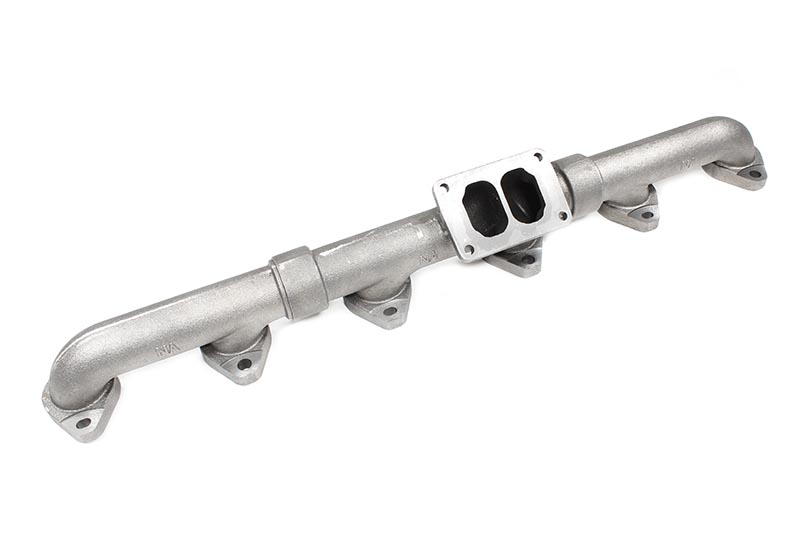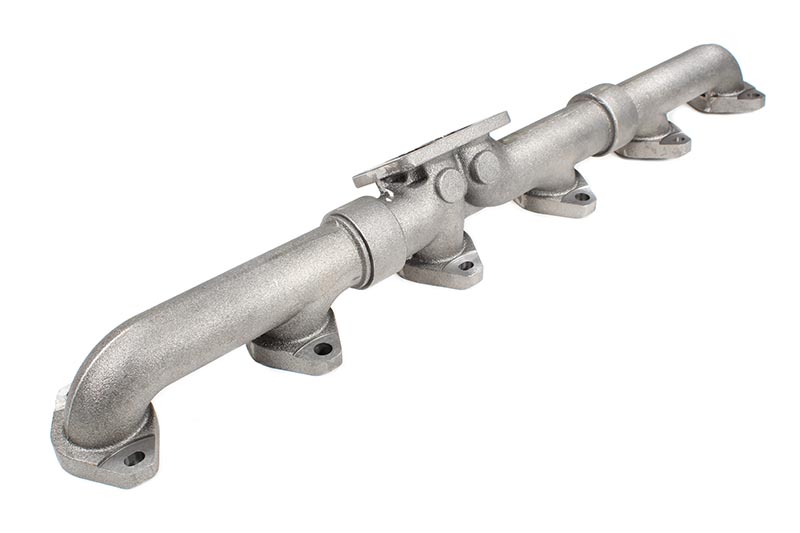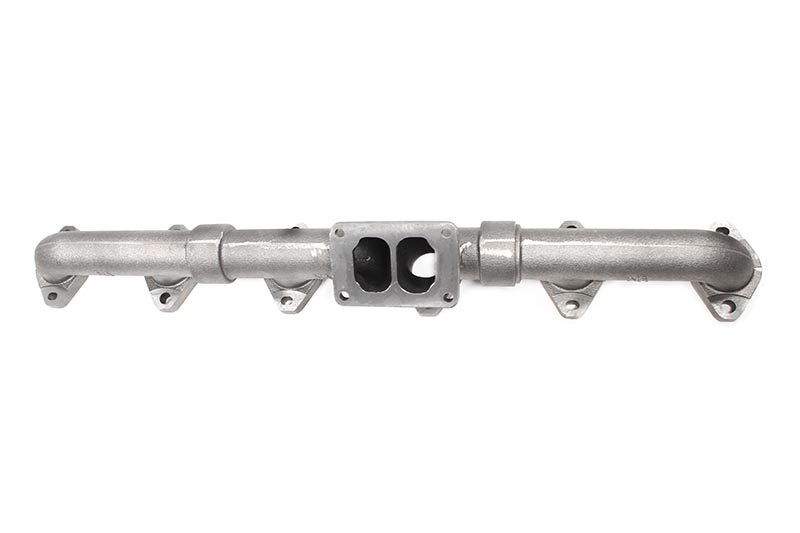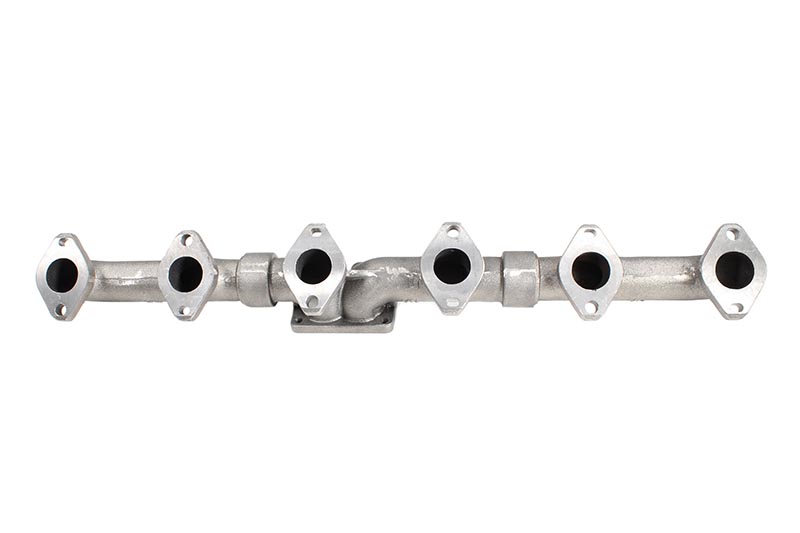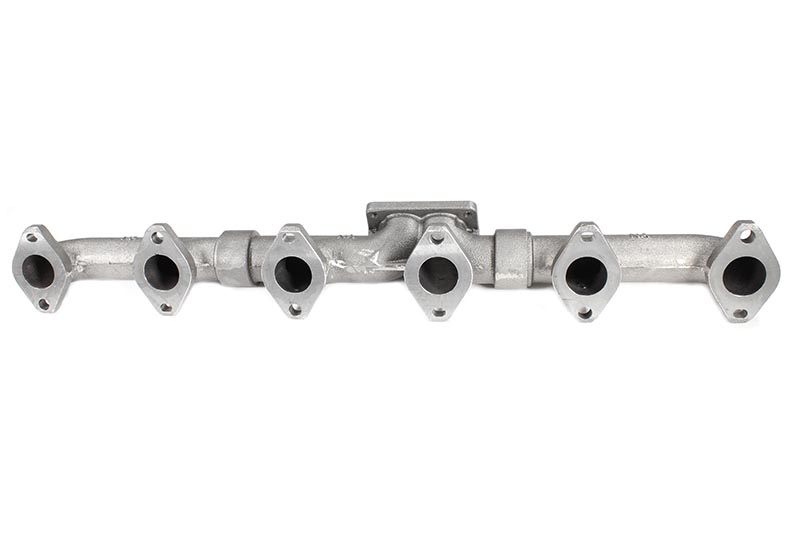Description
Exhaust Manifold for Caterpillar C15, 3406E – Part Number 4346111
Why Choose Our New Exhaust Manifold for the 3406E, C15?
- Brand new built to OEM specifications
- 2 Year parts and labor warranty
IMPROVE PERFORMANCE AND EXTEND THE LIFE OF YOUR DIESEL ENGINE
HHP’s Exhaust Manifold for the Caterpillar C15, 3406E produces a higher level of performance than OE parts and increases the life of your C15, 3406E diesel engine. Our Exhaust Manifold is engineered as an upgraded replacement to the OEM part with a perfect fit for easy installation. You’ll receive a brand new Exhaust Manifold built to OEM specifications and backed with a two year parts and labor warranty!
Extra loud acceleration? Poor fuel efficiency? If so, your Caterpillar C15, 3406E may have a worn down or damaged exhaust system. As your C15, 3406E’s exhaust system wears, it can cause all sorts of engine issues and damage if not replaced. Fortunately for you, HHP has you covered! Replace your failing exhaust system with a New Exhaust Manifold 4346111 from Highway and Heavy Parts.
Don’t risk the health of your C15, 3406E; buy a high-quality aftermarket 4346111 Exhaust Manifold from America’s trusted diesel engine parts supplier. At Highway and Heavy Parts, you’ll get an Exhaust Manifold manufactured in an ISO 9001:2015 certified facility, ensuring quality and consistency for your Caterpillar C15, 3406E. Each part is crafted with hard-wearing strength and durability to ensure your 4346111 Exhaust Manifold can withstand the rigors of the road.
Guaranteed for fit and function, HHP parts have the right combination of quality and price with total support from our on-staff ASE-certified technicians. With specialized knowledge, quality products, fast shipping, and unbeatable customer service, HHP has you covered. Order your New Exhaust Manifold 4346111 today!
From diagnosis through delivery, we’re Highway & Heavy Parts!
Contents: Caterpillar C15, 3406E Exhaust Manifold – (4346111)
Frequently Asked Questions
What are the symptoms of a failing Caterpillar C15 or 3406E exhaust manifold?
Recognizing the warning signs of exhaust manifold failure on your Caterpillar C15 or 3406E engine is essential for preventing costly secondary damage and maintaining optimal performance. Extra loud acceleration is typically the first and most noticeable symptom, presenting as a distinctive ticking, hissing, or roaring sound that becomes more pronounced as engine RPM increases. This excessive noise occurs when cracks develop in the manifold casting or when gaskets deteriorate, allowing high-pressure exhaust gases to escape before reaching the turbocharger and exhaust system. Poor fuel efficiency is another significant indicator that often accompanies manifold problems. When exhaust leaks compromise the pressure differential required for proper turbocharger operation, the engine’s electronic control module compensates by injecting additional fuel to maintain power output, potentially increasing fuel consumption by ten to twenty percent or more depending on leak severity. Loss of power, particularly noticeable when hauling heavy loads or climbing grades, results directly from reduced turbocharger boost pressure caused by exhaust gases escaping through manifold cracks rather than driving the turbine wheel effectively. Visual inspection often reveals exhaust soot streaks or carbon deposits around manifold flanges, mounting surfaces, and gasket areas, clearly marking where leaks are occurring. You might also detect a strong exhaust smell entering the cab, which happens when leaking gases migrate through firewall penetrations or ventilation intake areas. Check engine lights may illuminate with diagnostic trouble codes related to turbocharger underboost conditions, exhaust backpressure sensor anomalies, or oxygen sensor irregularities, all potentially linked to manifold integrity issues. In severe cases, operators report seeing glowing red spots on the manifold during nighttime operation, indicating extreme heat concentration at crack locations. White smoke during startup can indicate exhaust gases mixing with coolant if manifold cracks extend into water jacket passages. A pulsating exhaust leak sound at idle that corresponds with individual cylinder firing events is another clear diagnostic indicator. If you experience any combination of these symptoms on your C15 or 3406E, immediate inspection and replacement with the 4346111 manifold prevents further damage to the turbocharger, exhaust components, and surrounding engine systems.
Does the 4346111 exhaust manifold fit both Caterpillar C15 and 3406E engines?
The 4346111 exhaust manifold is specifically engineered for cross-compatibility with both Caterpillar C15 and 3406E engines, making it a versatile replacement option for fleet operators and repair facilities working with these popular Caterpillar platforms. This compatibility stems from the shared architectural heritage between these engine families, as the C15 evolved from the 3406E platform while maintaining many common mechanical components to facilitate parts interchangeability and reduce inventory complexity. The 3406E, produced from the mid-1990s through the early 2000s, established the foundational design that carried forward into the C15 family, including basic block architecture, cylinder head configuration, and exhaust system mounting arrangements. While the C15 introduced electronic advancements and refinements over the 3406E, critical dimensions like exhaust port spacing, stud hole patterns, and turbocharger mounting flange geometry remained consistent across many configurations. However, it’s important to understand that both the C15 and 3406E were produced in multiple variations over their production runs, with differences in horsepower ratings ranging from 330 to over 600 horsepower, various turbocharger types and mounting configurations, different emission certification levels, and OEM-specific installation requirements. The 4346111 manifold fits specific configurations within both engine families, particularly those sharing identical turbocharger mounting specifications and exhaust routing arrangements. Before purchasing, you should verify compatibility with your specific engine by locating your complete engine serial number from the dataplate, identifying your current manifold part number from casting marks or service records, noting your engine’s horsepower rating and model designation, and documenting your truck’s make, model, and year. Highway and Heavy Parts’ ASE-certified technicians possess extensive Caterpillar engine expertise and can definitively confirm whether the 4346111 manifold is the correct application for your particular C15 or 3406E configuration, ensuring proper fit and reliable function.
What makes this exhaust manifold superior to OEM Caterpillar parts?
Highway and Heavy Parts’ 4346111 exhaust manifold for Caterpillar C15 and 3406E engines is engineered to deliver performance that meets or exceeds original equipment manufacturer specifications while providing superior value and warranty protection. Built to OEM specifications means this manifold maintains all critical dimensions, port configurations, flange geometries, and material specifications that match Caterpillar’s engineering requirements, ensuring proper fit and function in your engine application. The manifold is manufactured in an ISO 9001:2015 certified facility, which represents the international standard for quality management systems, ensuring consistent manufacturing processes, rigorous inspection protocols, and comprehensive quality control at every production stage. This certification demonstrates the manufacturer’s commitment to producing parts with reliable dimensional accuracy, structural integrity, and performance characteristics. The manifold is crafted from high-grade cast iron or ductile iron alloy specifically formulated to withstand extreme thermal cycling, resist cracking under repeated expansion and contraction, and maintain structural integrity when exposed to corrosive exhaust gases at temperatures exceeding 1200 degrees Fahrenheit. What distinguishes this aftermarket manifold from standard OEM parts is the combination of quality construction at a more competitive price point, backed by an exceptional two-year parts and labor warranty that provides comprehensive protection significantly beyond typical aftermarket warranties. This extended warranty coverage demonstrates Highway and Heavy Parts’ confidence in their product quality and provides peace of mind for your investment. The manifold is designed as an upgraded replacement featuring enhanced durability characteristics and engineering refinements based on real-world performance feedback from thousands of installations. Additional advantages include fast shipping to minimize your downtime, which is critical for commercial operations where every day out of service represents lost revenue, and access to ASE-certified technicians who provide expert technical support throughout the installation process and the life of the component. This combination of OEM-equivalent quality, superior warranty protection, competitive pricing, and comprehensive technical support makes the 4346111 manifold an intelligent choice for operators seeking maximum value and reliability.
How does proper exhaust manifold function affect my Caterpillar engine’s performance?
The exhaust manifold serves as a critical component in your Caterpillar C15 or 3406E engine’s performance, directly influencing power output, fuel efficiency, turbocharger operation, and overall engine longevity. Understanding this relationship helps appreciate the importance of maintaining manifold integrity and replacing failed units promptly. Turbocharger performance depends entirely on the manifold’s ability to collect exhaust gases from all cylinders and deliver them to the turbocharger turbine housing with maximum pressure and thermal energy. Even small manifold cracks or minor gasket leaks can reduce turbocharger drive pressure by twenty to forty percent, resulting in significantly diminished boost levels, reduced power output, sluggish acceleration, and poor throttle response, particularly when pulling heavy loads or operating at higher altitudes. A properly functioning manifold ensures all exhaust energy reaches the turbocharger, generating the boost pressure necessary to force dense air into the cylinders for optimal combustion efficiency and power production. Fuel economy is directly affected by manifold condition because exhaust leaks disrupt the engine’s ability to achieve proper air-fuel ratios. When boost pressure drops due to manifold leaks, the electronic control module compensates by injecting additional fuel to maintain desired power levels, sometimes increasing fuel consumption by fifteen to twenty-five percent depending on leak severity and operating conditions. A leak-free manifold allows the engine to operate at its designed efficiency, minimizing fuel consumption per horsepower produced. Exhaust gas temperatures throughout the engine are influenced by manifold design and condition, as properly designed port configurations and smooth internal surfaces promote efficient gas flow and even temperature distribution. A new manifold with precision-cast ports and clean surfaces reduces exhaust gas temperatures compared to old manifolds with carbon buildup, erosion, and flow restrictions, decreasing thermal stress on valves, pistons, cylinder heads, and turbocharger components. Engine longevity is enhanced when the manifold maintains proper sealing because exhaust leaks generate excessive heat in the engine compartment, damaging electrical wiring, melting sensor connectors, degrading rubber components, and accelerating corrosion throughout the engine bay. By containing exhaust gases within the designed pathways, a healthy manifold protects surrounding components and systems from heat damage, extending their service life and reducing maintenance costs over time.
What installation tips ensure maximum life from my new Caterpillar exhaust manifold?
Proper installation of your 4346111 exhaust manifold is absolutely critical for achieving maximum service life and preventing premature failure on your Caterpillar C15 or 3406E engine. Following best practices during installation can mean the difference between a manifold lasting several hundred thousand miles versus failing prematurely in just tens of thousands of miles. Surface preparation represents the foundation of successful installation and begins with thoroughly cleaning all mating surfaces on the cylinder head and turbocharger flange using appropriate scrapers, wire brushes, and solvent to remove all traces of old gasket material, carbon deposits, and corrosion. These surfaces must be completely flat and smooth to ensure proper gasket sealing, so inspect them carefully for warping, pitting, or damage that might prevent adequate sealing. Use a precision straightedge to check cylinder head flatness, as even minor warping can cause persistent leak issues. Gasket selection and installation requires using only high-quality gaskets specifically designed for Caterpillar C15 and 3406E applications, as generic or low-quality gaskets will fail prematurely under the extreme thermal cycling these engines generate. Install gaskets dry unless manufacturer instructions specifically call for sealant, and position them carefully to ensure all bolt holes and ports align correctly before beginning bolt installation. Bolt tightening procedure is perhaps the most critical installation step and must follow manufacturer torque specifications exactly using a properly calibrated torque wrench. Never guess at torque values or use impact tools for final tightening, as over-torquing creates stress risers that initiate cracks while under-torquing allows leaks and movement that accelerate failure. Follow the prescribed tightening sequence religiously, typically starting from center bolts and working outward in a specific cross-pattern that ensures even clamping force distribution and prevents manifold warping. Perform the tightening in multiple stages, bringing all bolts to one-third torque specification first, then two-thirds, and finally to full specification in the prescribed sequence. Hardware considerations include replacing all manifold mounting studs or bolts if they show any signs of damage, corrosion, or thread wear, as reusing compromised hardware invites future problems. Use anti-seize compound on threads sparingly, applying only to the threads and not to surfaces where it might contaminate gaskets. Allow the engine to go through several heat cycles after installation, then re-torque all manifold bolts to specification after the engine has cooled completely, as thermal cycling during initial operation can cause slight settling that should be corrected. Inspect all connections for leaks during the first several operating hours, looking and listening for any signs of exhaust escaping, and address any issues immediately before they cause damage. By following these installation best practices, you’ll maximize the service life of your 4346111 manifold and ensure reliable performance throughout hundreds of thousands of miles of operation.





